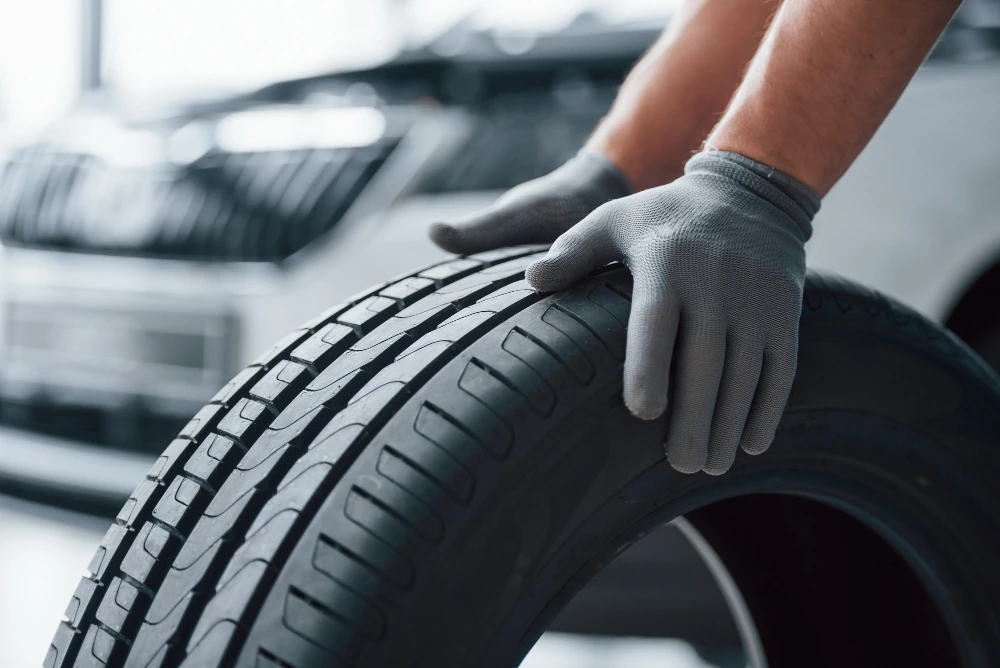Tyre recycling - everything you need to know

The development of the automotive industry is increasing the demand for car accessories and tyres. The latter, once they have worn out, pose a serious environmental risk. The longer they are stored improperly, the greater. The fact that over time they can become a second home for insects and rodents is one thing, but in the event of a fire, they pose a major challenge for firefighters who have to deal with waste containing high levels of toxic compounds. This is why recycling them is so important.
At the beginning of the second millennium (in 2003 to be precise), statistics indicated that more than 2.6 million tonnes of waste tyres were generated in the European Union countries, and more than 136 000 tonnes in Poland alone. It is worth noting at this point that used tyres account for approximately 80% of so-called post-use rubber waste. Their specific properties make it very difficult to recycle them at the end of their useful life.
Used car tyres are classified as multi-material waste. As the name suggests, they are created by combining two or more components. In the case of tyres, these are: rubber compounds of natural rubber and synthetic rubbers, fillers (active carbon black, chalk, silica, zinc oxide, aluminium oxide and others) and stiffening and reinforcing agents.
In smaller quantities, however, the following can be encountered: softeners, organic fillers, antioxidants, pigments and dyes, vulcanisation accelerators, accelerator activators and many others.
It is worth mentioning that, for obvious reasons, different ingredients are used in the production of passenger car and truck tyres. In addition, there are differences due to the manufacturer's brand and the degree of tyre wear.

There are many ways to use waste rubber - tyres. The most common are:
- material recycling (e.g. production of rubber granules or recovery of steel scrap)
- feedstock recycling (e.g. partial return to the tyre manufacturing process)
- energy recovery
- retreading
- exporting part-used tyres for re-use (e.g. to countries with lower quality requirements)
- and storage.
In recent years, regulations have been introduced in Poland to implement the guidelines contained in European Union directives. Although they were intended to simplify matters, they significantly restricted the possibility of storing waste tyres. Thus, a ban on landfilling whole tyres has been in force since 1 July 2003, and a ban on landfilling shredded tyres came into force three years later.
In the end, however, everything turned out well. These restrictions, as well as the obligation to achieve high recycling rates for tyres (from 2007 onwards this will be 15%, with retreading not included in the calculation of the recycling rate achieved), have led to increased interest in recycling this waste.
It turned out that used tyres have a high energy potential; they have a high calorific value (31-32 megajoules/kilogram) and an additional beneficial feature is the small variations in their averaged chemical composition.
Tyre burningemissions, especially in the cement, power and paper industries, is so far practically the only way of recovering the energy they contain. It should be noted that the direct combustion of tyres only allows the recovery of about 40% of the chemical energy they contain. However, with gasification or pyrolysis of used tyres, the energy recovery efficiency can be much higher, reaching up to 70%.
The pyrolysis process is attracting increasing interest. However, despite numerous studies, carried out in various countries, indicating the great possibilities and benefits of its application for the reprocessing of tyres, the process is so far only sporadically used on a commercial scale.
Thermal tyre recycling - what is pyrolysis:
Pyrolysis is, in the simplest terms, the decomposition of rubber under high temperatures without the use of oxygen. This process yields products in the form of gas (hydrocarbon), oils and silica or steel.
It attracted interest as early as the 1970s, particularly in the United States and Japan. However, technical problems and economic conditions quickly discouraged the companies involved.
Its renaissance came in the 1990s. It was then that more and more car tyre pyrolysis plants were put into operation, undoubtedly due to both the legislative conditions concerning waste management and the economic situation making it possible to profit from such a process.
Entrepreneurs in Poland are almost unanimous in expressing their dissatisfaction with the fact that the regulations impose on them a recycling limit for waste tyres of only 15% out of all those available to the company on an annual basis. They want the government to increase the limit, but whether this will happen must be decided by the Minister of the Environment in a relevant regulation.






